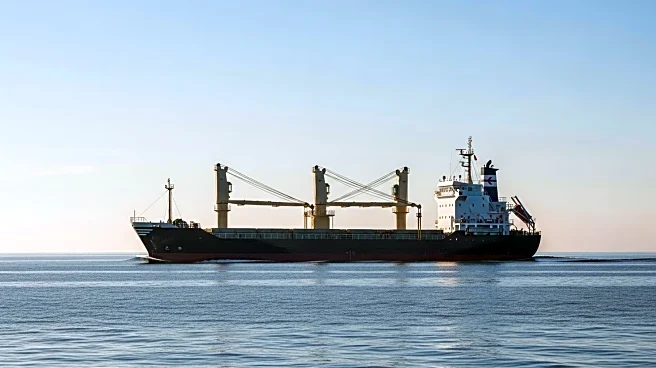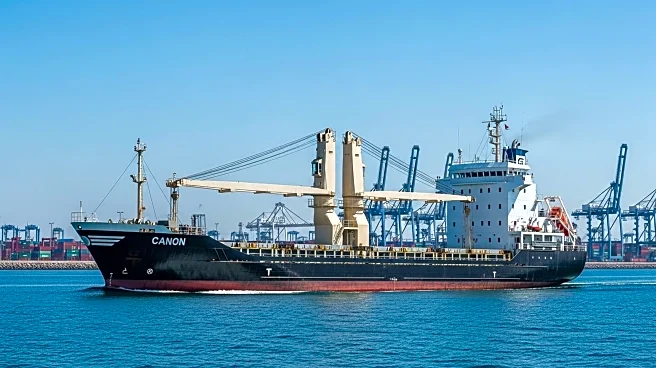What's Happening?
ACT Research has reported a significant decline in Class 8 truck orders for September, with a 44% year-over-year decrease to 20,800 units in North America. On a seasonally adjusted basis, the orders totaled 18,800 units, reflecting a 225,000 seasonally adjusted annual rate (SAAR). The decline is part of a broader trend, with orders on a 6- and 12-month basis continuing to fall, recorded at 178,000 and 235,000 respectively. Carter Vieth, a research analyst at ACT Research, highlighted that the longest for-hire downturn in history is impacting tractor demand, as freight rates remain below inflation levels. The industry is also facing uncertainty due to impending tariffs and regulatory changes, including a Supreme Court case on IEEPA tariffs and anticipated announcements from the EPA regarding low-NOx regulations.
Why It's Important?
The decline in Class 8 truck orders is a critical indicator of the challenges facing the freight and logistics industry. The downturn in orders suggests a reduced demand for freight transportation, which could have ripple effects across the supply chain, affecting manufacturers, suppliers, and logistics companies. The ongoing for-hire downturn and low freight rates are pressuring the industry, potentially leading to financial strain for trucking companies. Additionally, the uncertainty surrounding tariffs and environmental regulations could further complicate planning and investment decisions for industry stakeholders. These factors collectively highlight the economic pressures and regulatory challenges that could shape the future of the trucking industry.
What's Next?
The trucking industry is awaiting several key developments that could influence future demand and regulatory conditions. The Supreme Court's decision on IEEPA tariffs, expected in early November, could have significant implications for trade and cost structures. Additionally, the EPA's forthcoming announcement on low-NOx regulations will be crucial for compliance and operational strategies. Industry stakeholders will need to navigate these uncertainties while adapting to the evolving economic landscape. The opening of 2026 order boards will be closely watched as companies assess market conditions and regulatory impacts.











